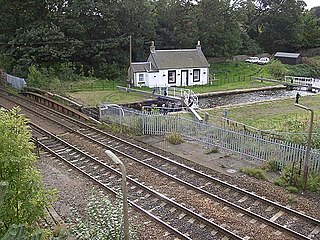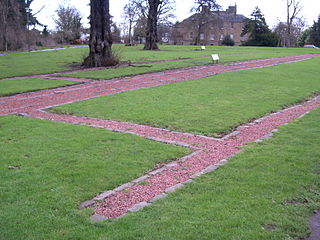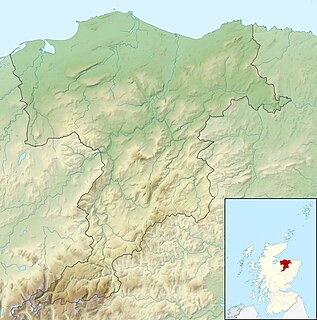 W
WCamelon is a large settlement within the Falkirk council area, Scotland. The village is in the Forth Valley, 1.3 miles (2.1 km) west of Falkirk, 1.3 miles (2.1 km) south of Larbert and 2.6 miles (4.2 km) east of Bonnybridge. The main road through Camelon is the A803 road which links the village to Falkirk. At the time of the 2001 census, Camelon had a population of 4,508.
 W
WThe Roman Fort of Carpow was situated at the confluence of the rivers Tay and Earn in what is now Scotland.
 W
WCawdor , located near the small village of Easter Galcantray, is suspected of being one of the northernmost Roman forts in Great Britain, though this evidence is controversial.
 W
WCramond Roman Fort is a Roman-Era archaeological site at Cramond, Edinburgh, Scotland. The settlement may be the "Rumabo" listed in the 7th-century Ravenna Cosmography. The fort was established around 140 AD and occupied until around 170, with a further period of occupation from around 208 to 214. Among the many archaeological finds, one of the most famous is a sculpture known as the Cramond Lioness.
 W
WGlenlochar is a hamlet on the western bank of the River Dee in the parish of Balmaghie in the historical county of Kirkcudbrightshire in Dumfries and Galloway. Glenlochar is located one and a half miles south of Balmaghie Kirk and 3 miles (5 km) north of Castle Douglas.
 W
WInchtuthil is the site of a Roman legionary fortress situated on a natural platform overlooking the north bank of the River Tay southwest of Blairgowrie, Perth and Kinross, Scotland.
 W
WThomshill, located 6 kilometres (3.7 mi) south of Elgin in Moray, Scotland, is the site of an excavated rectilinear enclosure that has been interpreted as a possible Roman military camp or fort. The enclosure covers an area of approximately 3.25 hectares and is situated at a height of 72 metres (236 ft) above ordnance datum.
 W
WTrimontium is a Roman fort complex in Scotland. Located at Newstead, near Melrose, in the Scottish Borders, in view of the three Eildon Hills, it is a remarkable site that still has much to reveal. Identified by Ptolemy in his Geography, the location of Trimontium, sixty miles north of Hadrian's Wall, means that the fort's position and status was constantly changing. Between c.80AD and c.180AD the expansion, consolidation & retreat of the Roman presence in Caledonia, as it pushed further north to the Antonine Wall & beyond, and retreated back south of Hadrian's Wall, led to consequential changes in the role, fortunes and focus of Trimontium.
 W
WWesterwood is an area in the north-east of Cumbernauld in North Lanarkshire, Scotland. Historically it was the site of a Roman Fort of which a video reconstruction has been produced. In the past two decades, new housing developments have been built around the Westerwood Hotel and Golf Course. The golf course, which was designed by Seve Ballesteros and Dave Thomas, is located on the north side of the town, close to Cumbernauld Airport. Westerwood Community Council was set up for local residents and a committee has been appointed. Neighbouring villages which are outside of Cumbernauld include Dullatur to the north-west and Castlecary to the east.